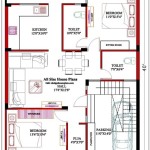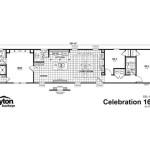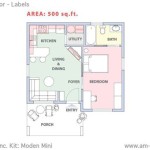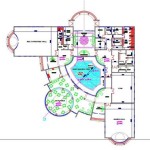Electrical Symbols House Plans: Understanding the Language of Electrical Wiring Diagrams
Introduction Electrical symbols are a crucial aspect of house plans, serving as a visual language to represent the layout and components of an electrical system. These symbols provide a clear understanding of the electrical infrastructure, enabling contractors, electricians, and homeowners to effectively plan, install, and troubleshoot electrical systems. In this article, we will explore the significance of electrical symbols in house plans and delve into the various symbols commonly used to depict different electrical components. The Importance of Electrical Symbols in House Plans 1. Accurate Representation: Electrical symbols accurately represent the physical placement and connection of electrical devices, outlets, switches, and wiring routes. This ensures that electrical work is carried out as per the designed plan, avoiding errors and ensuring the safety and reliability of the electrical system. 2. Clear Communication: Electrical symbols serve as a common language among professionals involved in electrical projects. They facilitate effective communication between architects, engineers, contractors, and electricians. The universal nature of these symbols ensures that plans can be easily understood by all parties involved, regardless of their location or language. 3. Simplified Planning and Installation: Electrical symbols simplify the planning and installation process by providing a visual representation of the electrical system. Contractors and electricians can quickly grasp the layout, identify potential challenges, and make informed decisions regarding the placement and connection of electrical components. This streamlined process reduces the risk of errors and ensures efficient execution of electrical work. Common Electrical Symbols and Their Meanings 1. Outlet Symbols: Outlet symbols represent electrical outlets or receptacles where appliances and devices can be plugged in. Common outlet symbols include: - Standard Outlet: This symbol indicates a single-phase, 120-volt outlet typically used for regular household appliances and lighting fixtures. - Duplex Outlet: Depicts a double outlet with two receptacles, providing two connection points for appliances. - GFCI Outlet: This symbol signifies a Ground Fault Circuit Interrupter outlet, which protects against electrical shocks by automatically shutting off power when a ground fault is detected. - USB Outlet: Represents an outlet with built-in USB ports, allowing for convenient charging of electronic devices. 2. Switch Symbols: Switch symbols indicate the location and type of switches used to control lighting or appliances. These symbols include: - Single-Pole Switch: Depicts a basic on/off switch that controls a single light fixture or outlet. - Three-Way Switch: Represents a switch that controls a light fixture from two different locations, commonly used for staircases or hallways. - Dimmer Switch: This symbol signifies a switch that allows for adjusting the brightness of a light fixture. - Motion Sensor Switch: Indicates a switch that automatically turns on lights when motion is detected, often used for outdoor lighting or security purposes. 3. Fixture Symbols: Fixture symbols represent various types of lighting fixtures used in a house. Common fixture symbols include: - Ceiling Light: Depicts a simple ceiling-mounted light fixture. - Pendant Light: Represents a light fixture suspended from the ceiling by a cord or chain. - Recessed Light: This symbol signifies a light fixture installed flush with the ceiling, providing a seamless appearance. - Wall Sconce: Indicates a light fixture mounted directly onto a wall, often used for accent lighting or decorative purposes. 4. Wiring Symbols: Wiring symbols illustrate the paths and types of electrical wires used in a system. Some common wiring symbols include: - Solid Line: Represents a continuous, unbroken wire carrying power or neutral current. - Dashed Line: Depicts a wire carrying a switched circuit or a communication line. - Dotted Line: Indicates a wire used for grounding or earthing purposes. - Wavy Line: Represents flexible conduit or wiring protected within a conduit. Conclusion Electrical symbols are an integral part of house plans, providing a clear and concise representation of the electrical system's layout and components. These symbols enable effective communication among professionals, simplify planning and installation processes, and ensure the safe and reliable operation of electrical systems. Understanding the meaning and usage of electrical symbols is crucial for anyone involved in electrical projects, from architects and engineers to contractors and homeowners. By adhering to standardized electrical symbols, we can ensure accurate and efficient execution of electrical work, creating safe and functional electrical systems in our homes.
It S Electrical

House Electrical Plan Diagram Symbols Blueprint

Floor Plan Symbols And Abbreviations To Read Plans Foyr

Home Electrical Plan Symbols

Image From Http Mewe Co Wp Content Uploads 2024 04 Good Architectural Floor Plan Symbols With Plans Electrical

Free House Wiring Diagram Edrawmax

It S Electrical
Common Electrical Symbols

Electric And Telecom Plans Solution Electrical Symbols Plan
Create An Electrical Plan Roomsketcher Help Center








